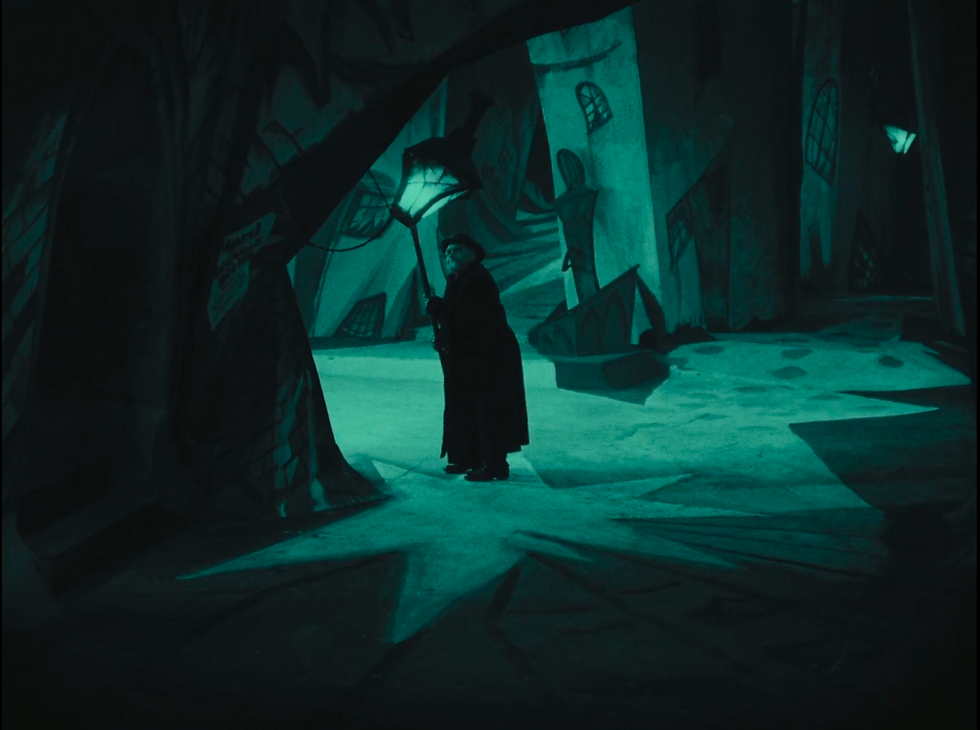
Roger Ebert wrote that The Cabinet of Dr. Caligari (Das Cabinet des Dr. Caligari) is arguably “the first true horror film.” And whether you agree with that or not, this 1920 classic, now 100 years old, unquestionably had a huge impact on the horror genre. Directed by Robert Wiene, Caligari absorbs us into an unrecognizable world of two-dimensional vistas and city scenes, almost everything set at oblique angles with sharp edges and saturated during the film’s restoration with unnerving colors. At the pinnacle of German expressionism, it is a must-see for anyone interested in the history of cinema and this rather weird movement in the arts.
Dr. Caligari (Werner Krauss), whose wiry white hair and bulging eyes give him the mad-scientist look, joins a fair to display a somnambulist named Cesare (Conrad Veidt). Cesare—claims Dr. Caligari—knows the past and future, and the doctor invites the audience to ask the sleeping man about their fates. A clerk is then told he’ll die by daybreak and, in his bed later, is murdered with a long spike. The police open an investigation with the somnambulist as their chief suspect; that is, until another man is caught about to murder a woman as she sleeps. Next there’s some cat and mouse, and we see Cesare sneaking into the bedroom of Jane—the fiancée of Francis, who is narrating these first few acts of the story to a fearful old man on what appears to be a park bench. We soon discover that Caligari is the director of an asylum for the insane, and the final act delivers yet an even more surprising twist.
What makes Caligari such a memorable classic is its bizarre and unsettling mise-en-scène. It’s more freaky than scary, I'd say, and is extraordinary for how it visually blends the themes of fear, subjugation, paranoia, and schizophrenia, insofar as these were viewed at the time. There's lots of interesting stuff written about the film, including a theory that it symbolized the German people’s blind compliance with authority, and forewarned of Hitler’s control and Nazi hegemony. There are also a number of sequels and remakes, none of which are as well-known or beloved as this absolute original.








Comments